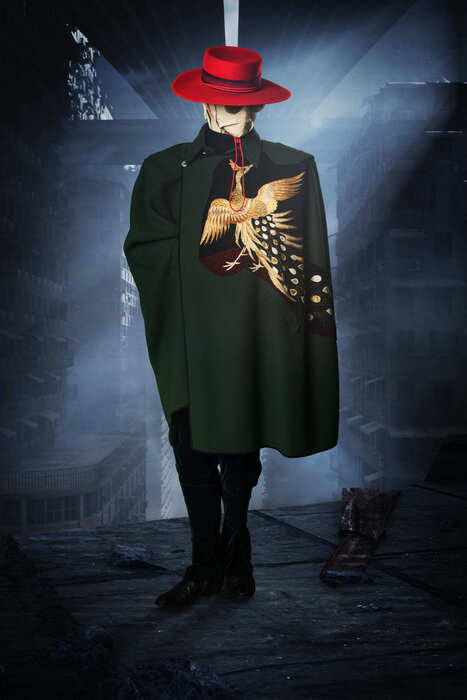Students from Graf-Rasso-Gymnasium studied the stories of some GDR contemporary witnesses.
They used their stories to create an exhibition in the Haeusler villa.
On two weekends, visitors can travel back in time and hear lectures.
Fürstenfeldbruck -
The exhibition is the result of a P history seminar entitled "Contemporary Witnesses of the SED Regime". 13 prospective high school graduates dealt with the people who did not want to run along in the former GDR, but offered resistance. "They all viewed the SED regime critically and experienced impairments," says high school student Johannes Winterstein.
The idea for the topic comes from Claudia Schuster.
The student council agreed to offer a topic with contemporary witnesses, says the history and art teacher at the Graf-Rasso-Gymnasium.
“And with the death of Max Mannheimer, we no longer have any contemporary witnesses from Nazi history.” Your topic aroused interest.
13 pupils dealt with the fate of the GDR citizens, but also with focal points such as the planned economy, state security and the SED regime.
Online interviews
Five former GDR citizens were found through a contemporary witness agency and personal contacts.
During the corona pandemic, they told their sometimes very moving life stories in online interviews.
“It was a great experience to hear the story of people who had to experience these fates at our age,” says Lea Greve.
You could hardly imagine at this age already mustering such strength and resisting.
But that is exactly what people did.
They suffered from reprisals in their businesses, fought for freedom, even went to prison and, when they arrived in the West, brought friends into freedom behind the wall.
“It is impressive what courage they have shown to stand up for their freedom,” says Johannes Winterstein.
To hand over knowledge
The pupils were allowed to decide how to present their results.
"We decided on an exhibition because it gives the topic a nice space," explains Winterstein.
With the help of the NS Documentation Center, they finally designed an exhibition, designed display boards and a flyer.
"We are lucky enough to live in a democracy," says Lea Greve.
It is their job to pass this knowledge on to the next generation.
Visitors can listen to excerpts from the eyewitness interviews on the computer.
It was important for the young people to present the contemporary witnesses not only as victims, but as people with their history.
“It was an appeal from contemporary witnesses that we understand how it used to be and how important freedom is,” says Antonia Baumüller.
+
In addition, the young people around (bottom photo from left) Johannes Winterstein, Philipp Seibold, Julia Heiduschat, Miriam Grunert dedicated a display to each contemporary witness and also collected material on topics such as the Free German Youth
© Weber
When looking for a sponsor for the exhibition, the students came into contact with the Kester Haeusler Foundation - and ran open doors.
"Since it was founded, the foundation has made German reunification its mission," reports Karin Wolfrum, representative of the board of directors.
She maintained a large GDR library, offered lectures and carried out contemporary witness projects.
“We thought it was great to open the Haeusler villa to the public on this occasion,” says Wolfrum.
Precisely because the students are concerned with their role in democracy and the question of personal freedom.
For this reason, the foundation organized a lecture and a reading as a supporting program.
Exhibition then in the Rasso-Gymnasium
The exhibition then goes to the Graf-Rasso-Gymnasium.
“This way we can show them again and again and organize events with contemporary witnesses at school with the Kester Haeusler Foundation,” says Claudia Schuster.
When everything is done, she will also submit the project as an application for the P-Semiar Prize.
"I think we have a good chance."
Regardless, the students take a lot with them.
“The topic of the GDR is neglected too much at school,” says David Deak.
Especially in times when AfD and lateral thinkers are pulling more and more people into the extreme camps, says Lea Greve.
"When you know the story, you realize how privileged we are."
The exhibition
can be on weekends, 23./24.
and 30./31.
October from 11 a.m. to 4.30 p.m. in the Haeusler Villa, Dachauer Straße 61.
The 3 G rule applies.
On the first weekend there is an interview with eyewitnesses at 12.30 pm, and at 2.30 pm the author Christian Ahnsehl reads from his novel “The stove setter”.
On the second weekend, Ralph Gründers gives a lecture on wall art at 2 p.m.
Registration by email to office@kester-haeusler-stiftung.de.






/cloudfront-eu-central-1.images.arcpublishing.com/prisa/6UILSHI4OVDJJMD2GLI5FLRMZY.jpg)






